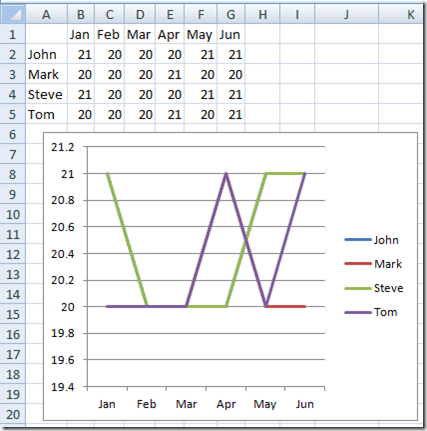

Titles can clarify the chart’s message.Trend lines can help draw attention to the progression of results.You can add or subtract grid lines or change the scale. Manipulate the axes to improve readability.Cluster data to create visual links between related information.Here are a few tips to enhance your bar charts: The data needs to be compared at a deep level.Īfter a chart is created, you have many ways to make it easier to read, communicate the presented data, or look better.Readers need to compare each segment to the same segment on other bars.When deployed incorrectly, stacked bar charts can be misleading. While stacked bar charts are handy in many situations, they are not perfect for every data visualization. Rankings: To show how a group of results stack up over time, such as the number of deals that salespeople close each month.Series-Level Changes: To view changes over time in a recurring set of figures, such as in factory production.Survey Results: To break down responses by demographic groups or other factors.Comparisons over Time: To demonstrate how different contributing factors change week to week or month to month.Distributions: To show where different items are apportioned.In the column version of a chart, they are switched. With a horizontal variation of the chart, the x-axis (on the left side) shows the stacked variable, and the y-axis (on the bottom) shows the segments. In a stacked bar chart, segments of the same color are comparable. In this form, each bar is the same height or length, and the sections are shown as percentages of the bar rather than as absolute values. For example, the increases or decreases of the value of investments in a stock portfolio over time is often represented as a stacked bar chart.Ī variation of the stacked bar chart is the 100% stacked bar chart.
#Select data for graph in excel mac series#
Stacked bar charts allow users to see changes in a series of data and where they occurred. This formatting makes it easy to compare both the whole picture and the components of each bar, as seen in the (fabricated) data below. In a stacked bar chart, parts of the data are adjacent (in the case of horizontal bars) or stacked (in the case of vertical bars, aka columns) each bar displays a total amount, broken down into sub-amounts.Įquivalent subsections are the same color in each bar. A standard bar chart compares individual data points with each other. No-code required.Ī stacked bar chart is a variant of the bar chart. WorkApps Package your entire business program or project into a WorkApp in minutes.Digital asset management Manage and distribute assets, and see how they perform.Resource management Find the best project team and forecast resourcing needs.Intelligent workflows Automate business processes across systems.Governance & administration Configure and manage global controls and settings.Streamlined business apps Build easy-to-navigate business apps in minutes.Integrations Work smarter and more efficiently by sharing information across platforms.


Each data series needs to be in its own column or row and the number of cells used for each data series needs to be identical. Sales data broken down by month would be an example of a data series.

Gather your data, making sure you organize it by the appropriate axes.


 0 kommentar(er)
0 kommentar(er)
